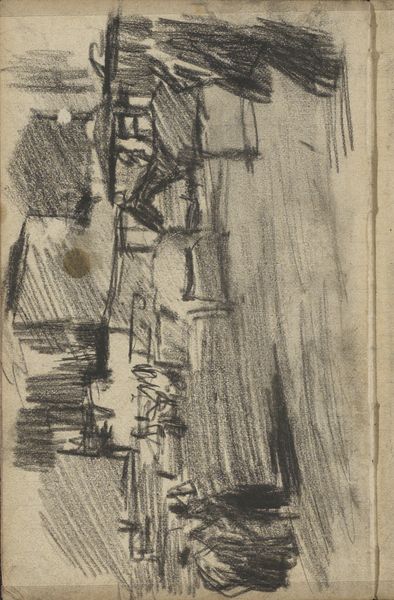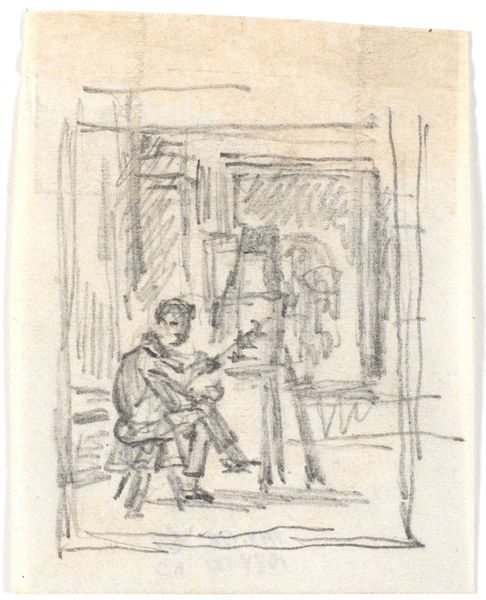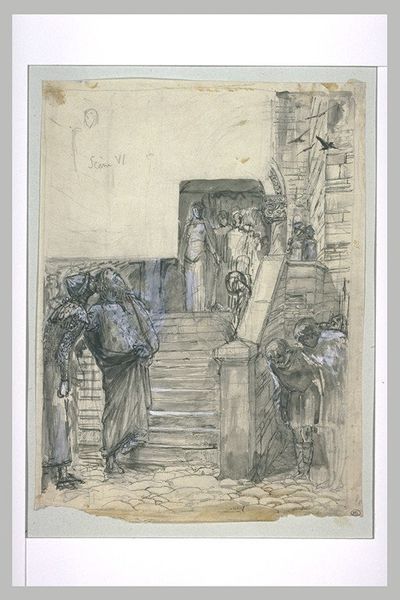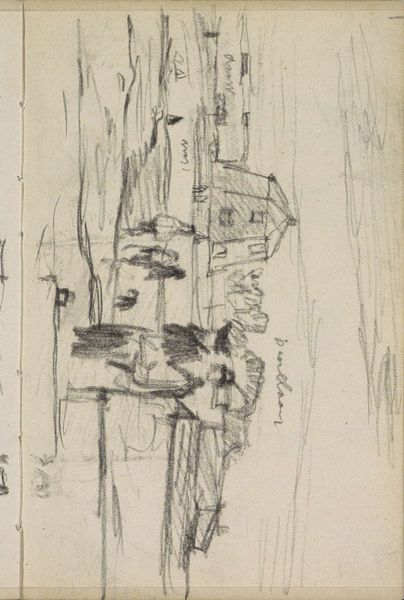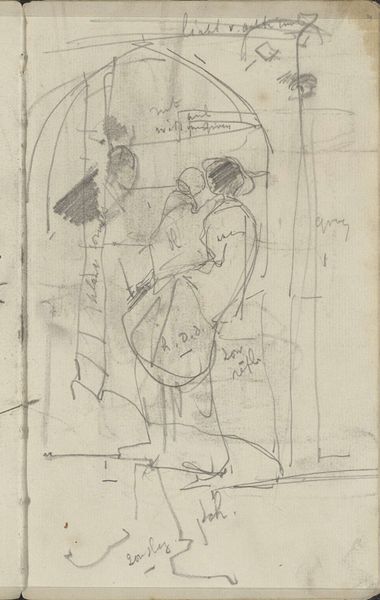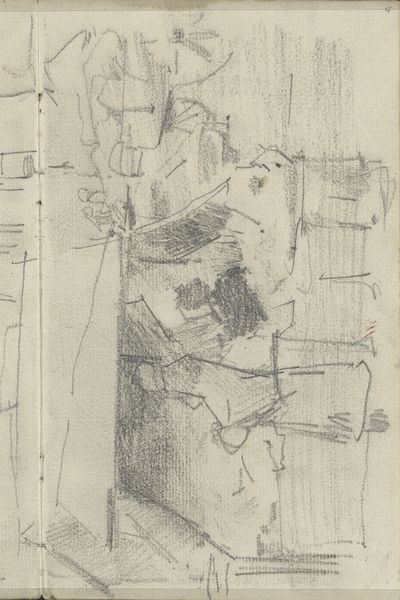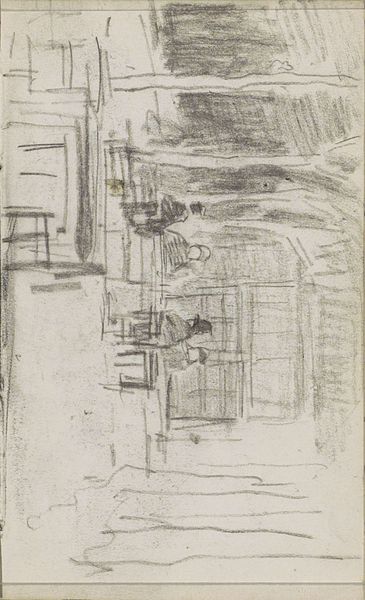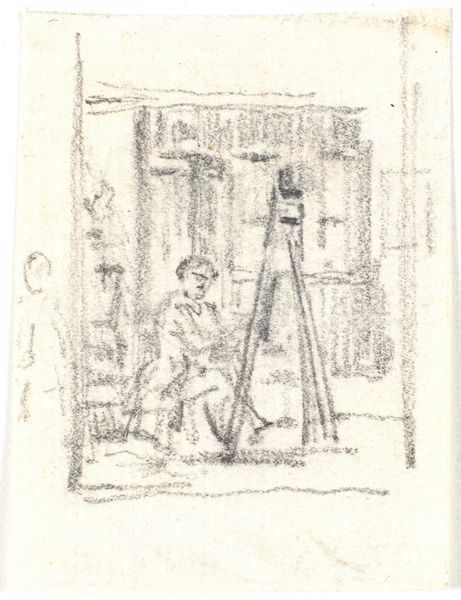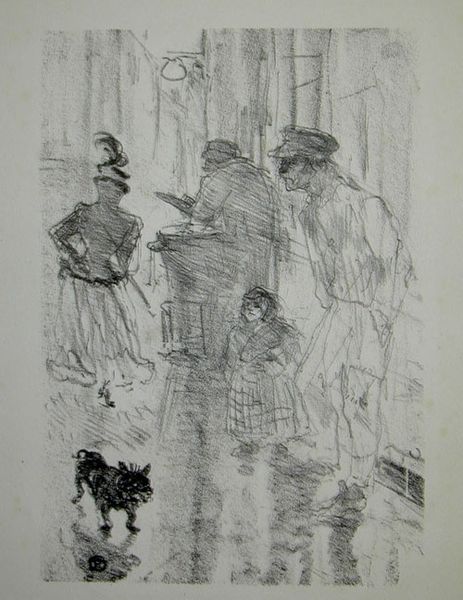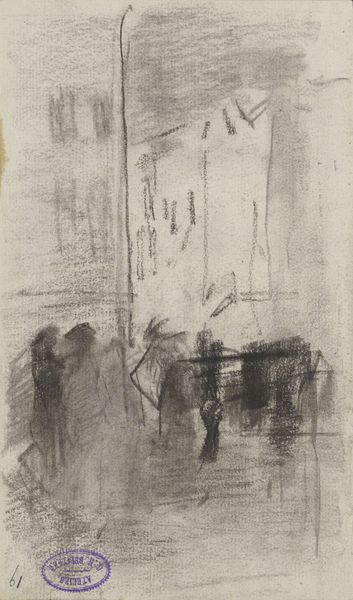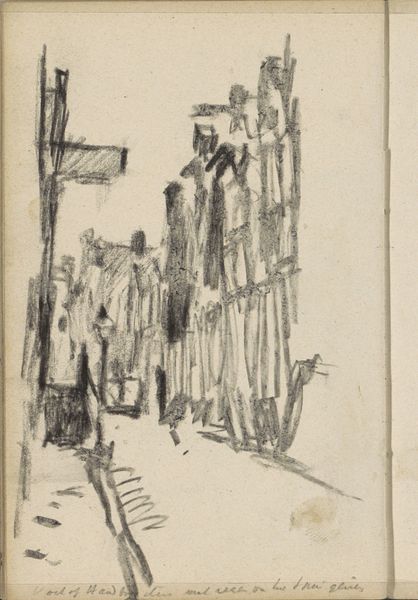
drawing, pencil, graphite, charcoal
#
portrait
#
drawing
#
pencil sketch
#
charcoal drawing
#
figuration
#
pencil drawing
#
pencil
#
graphite
#
genre-painting
#
charcoal
Dimensions: 11 1/4 x 7 in. (28.58 x 17.78 cm)
Copyright: Public Domain
Curator: This is Walter Shirlaw's "Study for Toning of the Bell," created circa 19th century, rendered in graphite and charcoal. It resides here at the Minneapolis Institute of Art. Editor: The initial feeling I get is one of observation. We're viewing a candid scene, an unfolding narrative steeped in everyday life; however, a feeling of darkness pervades this setting given the grey hues throughout. Curator: Exactly, it is not only the color tone, but also the graphic impact. We are presented with visible, perhaps deliberately unconcealed, marks and labor using humble graphite and charcoal—preparatory gestures becoming part of the artwork itself. I mean, consider the economic status and work shown... these weren't leisurely materials or a casual subject for most at the time, and notice, we, as viewers, observe from eye level with that group. Editor: Agreed. The composition certainly emphasizes a connection. The bell becomes this looming, almost mythical object in the background. The children surrounding it, a chorus of innocence, staring with such reverence. Do you feel Shirlaw uses the bell here as a symbol, perhaps for a calling to work and faith in their future? Curator: Yes, in his cultural context. The textures almost emulate labor. There's the visible hand of the artist evident in the sketchiness; nothing feels overly polished. Even that adds to our understanding; however, his skillful depiction almost romanticizes work while he clearly illustrates economic differences... is this fair? Is this glorification or awareness? I grapple with that complexity here. Editor: An interesting contradiction, absolutely. Perhaps Shirlaw presents both? He acknowledges social status through imagery laden with work. But that bell also speaks to tradition, hope, even the possibility of communal joy. It acts as a symbolic weight—the past, the present, and a hoped-for future, all captured in this singular moment. He isn't glorifying work per se, just highlighting its prominent role within these communities, their memories, and dreams. Curator: And yet the image is unfinished in nature and also quite literally since it is only a sketch. It offers so many opportunities to observe our place as viewers of both an image and what Shirlaw wanted to showcase... how are we, in turn, influencing history by observing, commenting, and working around pieces like these in today's world? Editor: Such potent observations of an artifact like this really challenge my interpretations and deepen my understanding... It encourages more than looking; we need reflection.
Comments
No comments
Be the first to comment and join the conversation on the ultimate creative platform.
